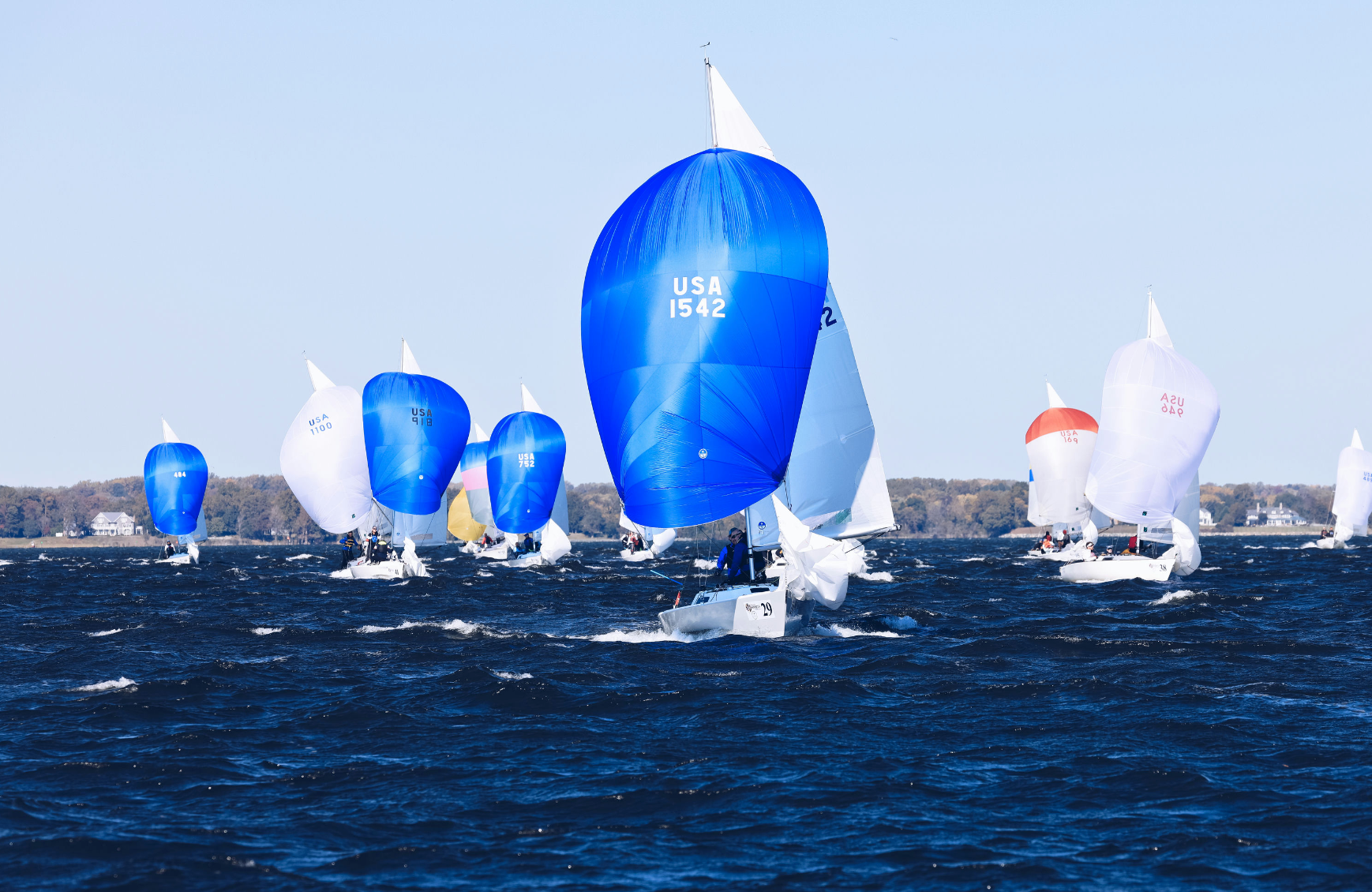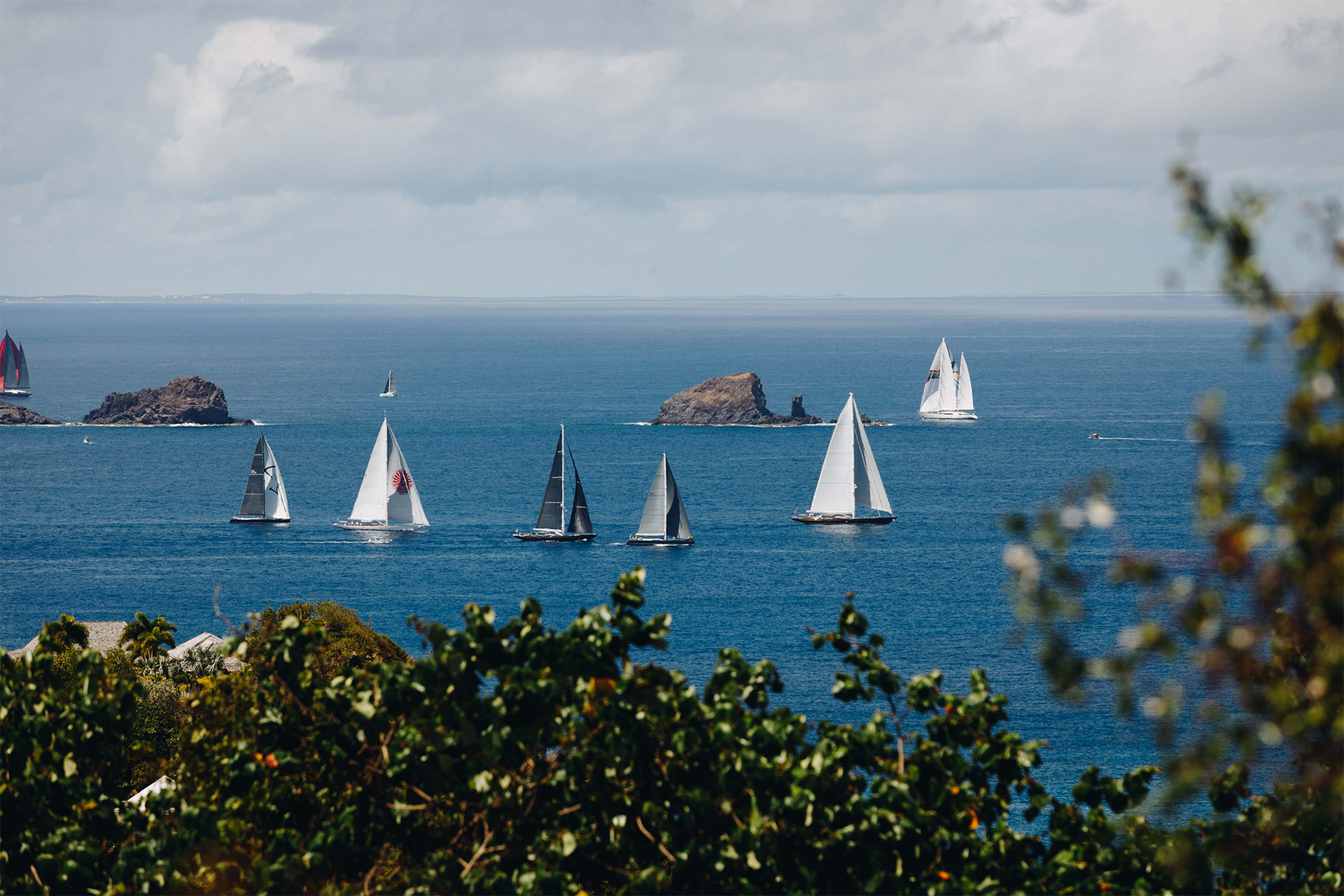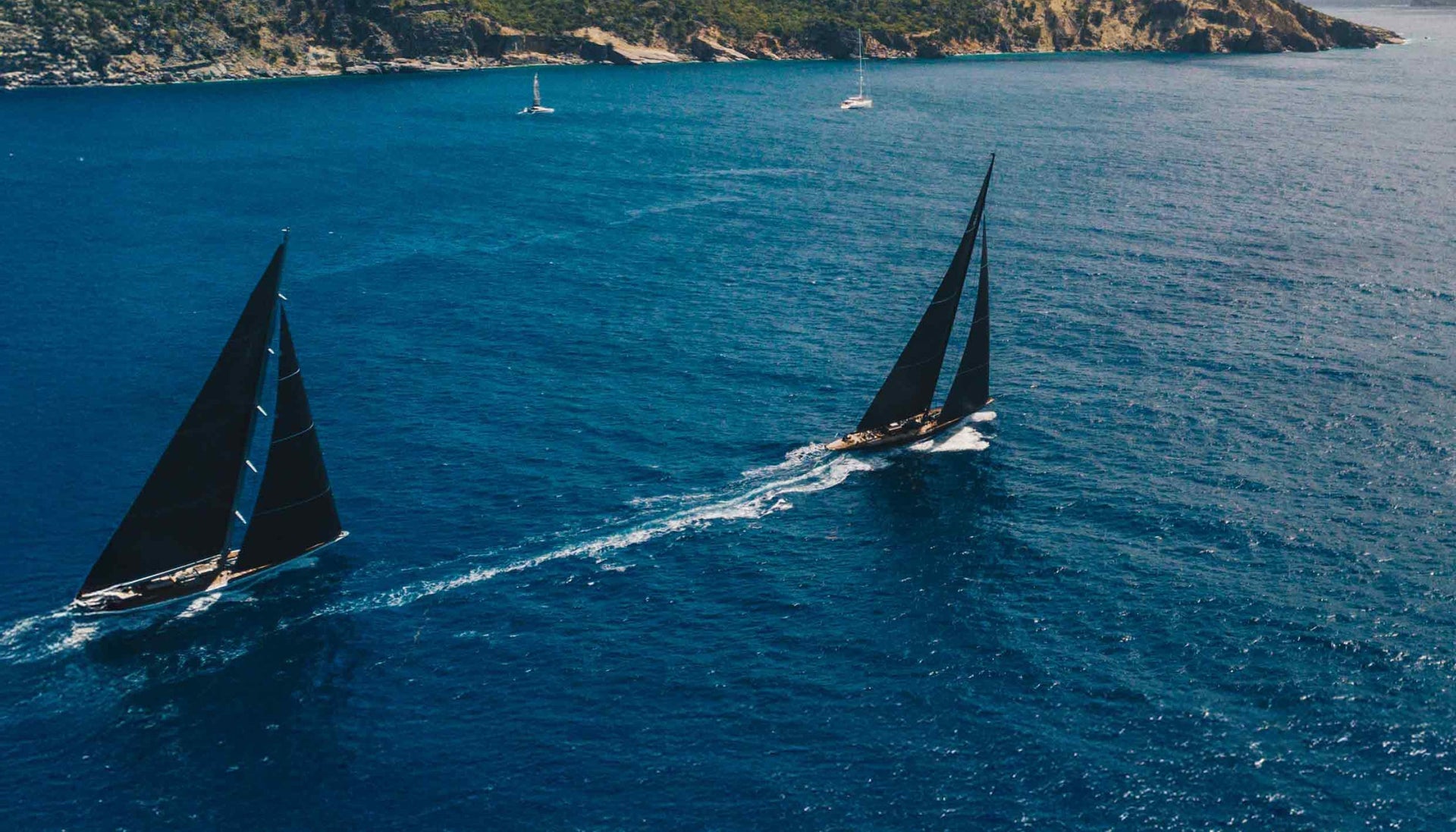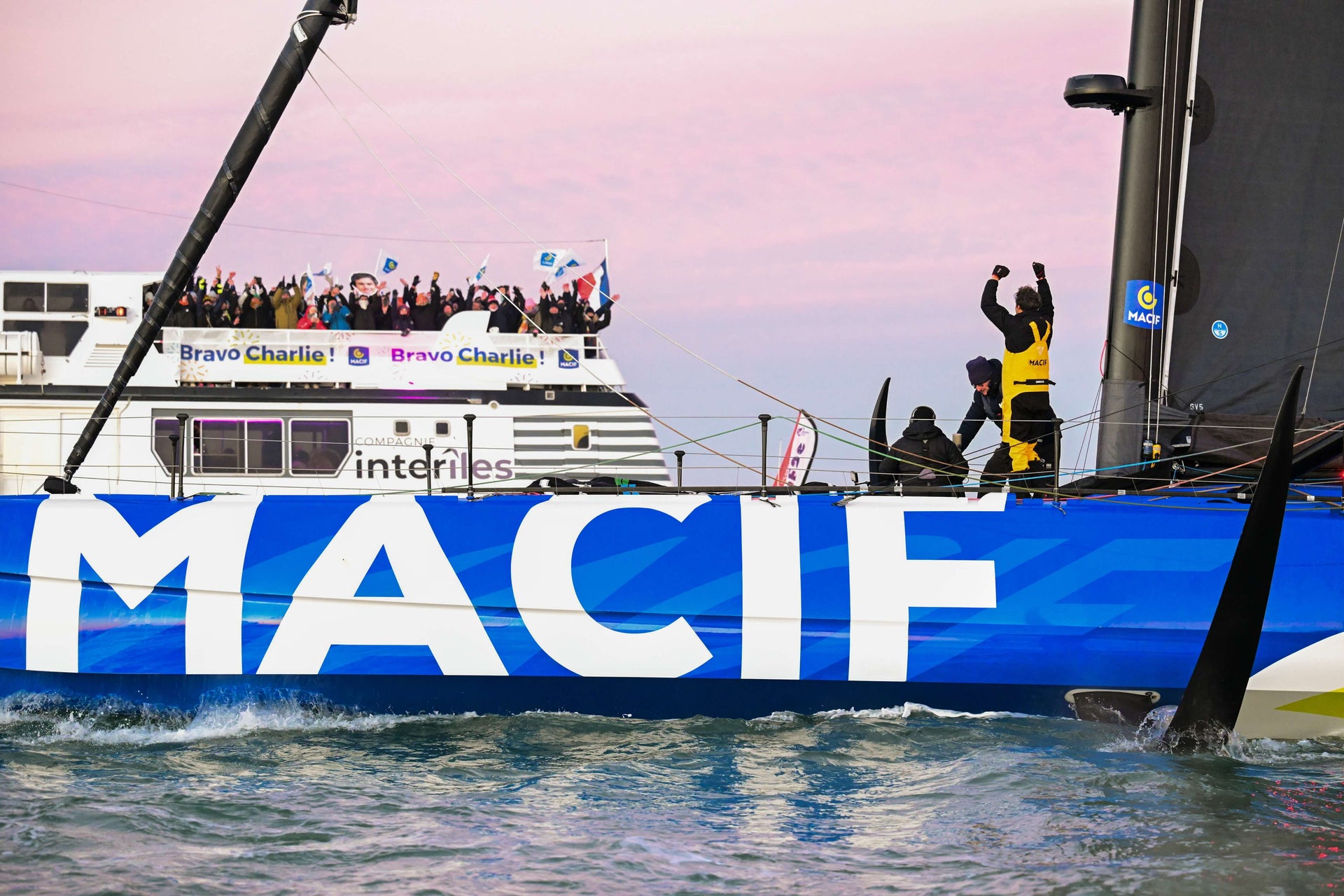DOUBLE THE TITLES, TWICE THE FUN
Sailing’s Mr. October, Travis Odenbach, won both J/24 & J/22 World Championships in one month
Travis Odenbach is ecstatic and now unburdened having finally won a J/24 World Championship title after nearly 15 years of thinking about it. “That was my one goal in life,” he says, “to win it just once.”
As he towed his winning craft from Seattle to his home in Rochester, New York, he was a happy sailor, family bound after a year packed with regattas. But somewhere in the middle of Montana, the phone rang. On the line was his Rochester mate Justin Damore who pitched an idea not so out of the blue: How about a run at the J/22 World Championship too?
Three weeks later, Odenbach, with an entirely different crew, was a double one-design world title holder, a feeling he describes this day as “overwhelming.” It’s been an incredible year, says the father of two young daughters, who also won the J/24 Nationals in Minnesota in September and the North Americans in Florida in April, but as always, there’s much more to this success story. We’re talking new sails, ace crews, and a self-awareness that’s perhaps just as powerful as boatspeed and tactics.

📸 Chris Howell
First, the sails. The Seattle J/24 Worlds was Odenbach’s first with a North Sails inventory, and it was indeed a game changer. “I haven’t been able to use North in 15 years, and I just said, ‘You know what, we have to try it because I’ve been beaten by North Sails at the Worlds for the last 10 years.”
Working with North Sails J/24 class experts Will Welles and John Mollicone over the summer, Odenbach quickly recognized the advantages he’d been missing. “The biggest thing we worked on this year was boatspeed. We could be wrong on tactics and wrong on boathandling but our straight-line speed would get us out of trouble,” Odenbach says. “With the North inventory I found that even if we were out of tune we could still make it all work. The forgiveness of these sails is so much better in light air, which has always been tough for me, so this was a big upgrade.
“I had weather helm in all conditions under 10 knots, which makes the boat a lot easier to drive, so the feeling was better and that immediately calmed me down. In the past I would keep the heel angle at 8 to 10 degrees in light air, just to give me some feel, but now I’m sailing at like 3 to 6 degrees, which really helps a lot.”
Acclimating to an unfamiliar sail package required a fair number of turning sessions, and Odenbach says an important focus was being able to maintain a thin lane, which proved crucial in Seattle. “In all of our training sessions we always set up to weather, a little bit compromised, so that in every single lineup we could learn how to live there,” he says. To do so, he says, requires a good speedometer and an understanding of what the boat’s top speed should be in every step of the wind range.
“If you’re trying to hold a thin lane, take that top speed and then knock it down two-tenths of a knot,” is Odenbach's advice. “If you’re going a little bit higher and two-tenths slower but can live in that range, you won’t slide sideways.”

📸 Chris Howell
In this mode, he says, the trick is to sheet mainsail firm, and then pull more, to the point where the top telltale is stalled 90 percent of the time. The skill is anticipating the speed crash. “Before that happens, you need to feel it and you’re going to ease the sails a few inches,” he says, “put the bow down for 10 seconds, regain the speed and then go back at it again. Think of the [J/24] mainsail as a trim tab. It usually doesn’t do anything for power, it’s just allowing you to go higher. So, you can do that and sail off the genoa, which makes the boat sort of crab upwind, going to weather sideways, if you will.”
With new designs refined by North Sails’ Mike Marshall, a past world champion as well, out with the trash went Odenbach’s old tuning guides. The nuances of J/24 rig tune are known well enough to not have to start over, he says, but the big adjustment nowadays is the mast-butt. “We probably had six or seven different positions, but for the Worlds we probably only used three of them. We were an inch further forward than I’ve been in the last five years, so that was huge.”
Also significant was a 23-point win for Odenbach’s team on Honeybadger. Alongside him in the nine-race series was the meticulous trimmer and Olympian Dave Hughes; the team’s laidback tactician Jay Miles, Odenbach’s Rochester mate, Jeff Sullivan, and the supremely talented Monica Morgan commanding the bow. Collectively, they’d done all the right things to prepare for the Worlds, which Odenbach says made it a stress-free experience that contributed to the result. “I never had an expectation of winning it,” he says. “I just wanted to sail well enough to have the opportunity to win it. That’s something that has changed for me in the last few years. It used to be like, ‘I gotta go win this.’ But now I’m like…I’m 40, I’d love to win it, but I just want to do well.”
The J/22 World Championship experience that followed, however, was exactly the opposite.

📸 Will Keyworth
“We hadn’t been on, or even seen the boat in two years,” Odenbach says. “When I got home from Seattle I dragged it out of storage, we cleaned it up, wet sanded it, put the rig up and made sure all the parts were there, and left for Annapolis with zero expectations of winning.”
The 40-boat fleet was stacked with top teams and a talented lineup of locals that had been working toward their hometown world championship for several years. And as he did with a new North Sails quiver for the J/24, Odenbach once again had to adapt to an unfamiliar set of new North Sails for the J/22. Thanks to proven designs by Marshall, that was the easier part of winning the Worlds. “We didn’t miss a beat with them,” he says. “I didn’t have to think about them, they looked good and they were reactive to the rig. I probably took about three hours to get our tune right, and that was pretty cool. Mike (Marshall) has taken these designs to the next level on how to make these sails even easier for people to use right out of the box.”
After the first day Odenbach and his teammates were leading and he says, “my brain and my mode changed pretty quickly from ‘gonna have some fun’ to ‘I think we can do this.’”
With past world champion and local Geoff Becker calling tactics, the trio battled their way through the dynamic autumnal winds, the swift currents and the unpredictability of the Chesapeake that makes it such a challenging venue.

📸 Will Keyworth
Those who know Odenbach know of his intensity on the racecourse, and he was doing all he could to keep his cool—until the final day when title nearly slipped from his grasp on the final day. The young and fiery Odenbach of a year ago would have been a basket case, but not the new one. For here’s an underappreciated element to his recent successes: he’s a changed man thanks to his sailing sports psychologist, Tim Herzog.
“At these world championships over the past 10 years I’ve been second and third a lot of times, but there’s always been this mental block—I start to doubt myself, I think that it will never happen, that I’m not good enough and all that stuff. I get wound up with knowing why. Talking about it with Tim was enough to allow me to think about it when it is happening and control it, so that was a huge part of these wins.”
In the last race of the J/22 Worlds, however, it was impossible for Odenbach to check his raw emotions. No one is perfect after all. “I screamed as loud as I could when we finished—probably scared the people on the pin boat,” he says. “And after we finished I saw my wife, my kids and my dog on a power boat. I had no idea they were out there. My kids had never seen me race and my wife, barely. I broke down in tears at that moment—it was just so cool.”
So, yes, Odenbach’s double world titles did ultimately come down to better sails, great teammates and smarter sailing, but there’s also a lot to be said about a cooler head prevailing.





